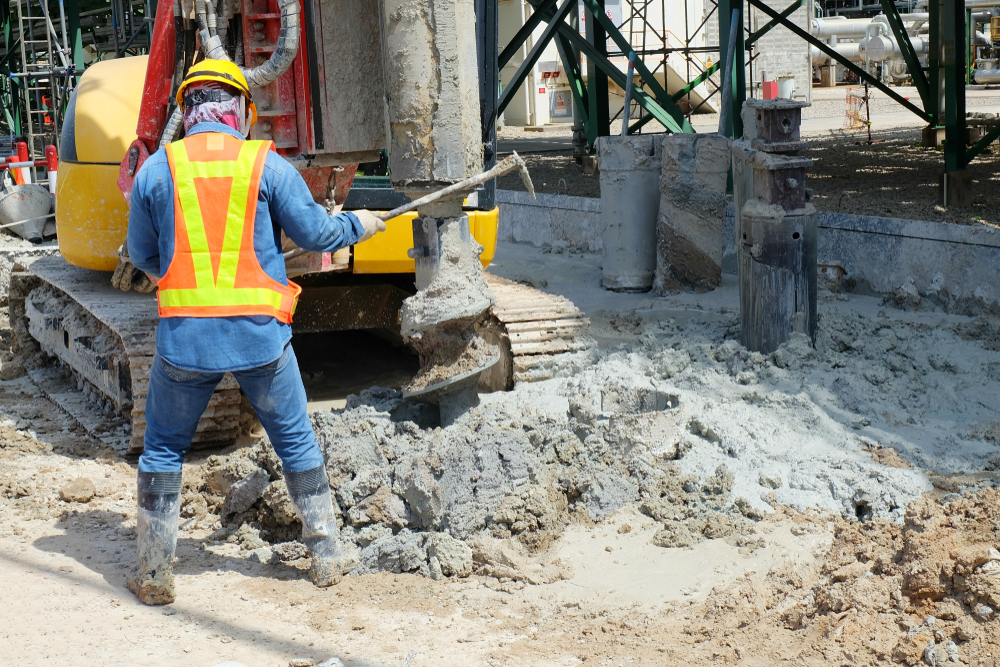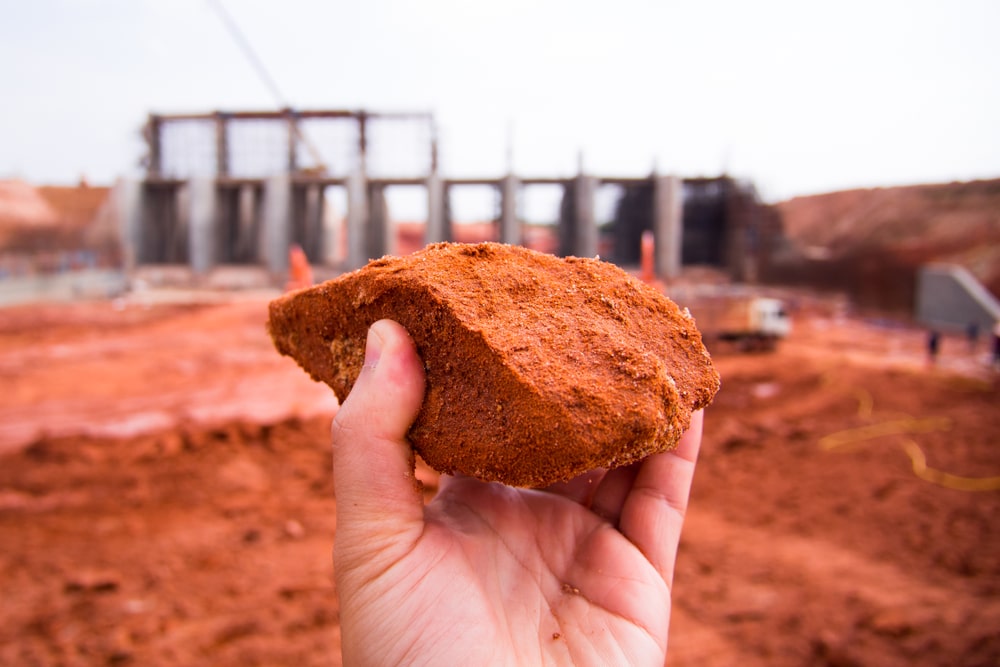Professional Consulting Engineer Services for Cutting-edge Facilities Solutions
Professional Consulting Engineer Services for Cutting-edge Facilities Solutions
Blog Article
Comprehending the Necessary Role of the Geotechnical Industry in Modern Construction Projects and Infrastructure Growth
The geotechnical industry is a keystone of modern building and infrastructure growth, providing important understandings into dirt habits that straight affect project end results. Through sophisticated soil assessments and ingenious engineering options, geotechnical professionals not only guarantee architectural stability yet also address sustainability worries amidst progressing ecological standards. As facilities demands grow and brand-new obstacles emerge, the value of this field ends up being significantly obvious. What implications might these developments have for future tasks and the general security of our constructed setting?
Relevance of Soil Analysis
Soil analysis plays an important duty in the geotechnical industry, working as the structure for notified decision-making in building and construction projects. Accurate soil evaluation is vital for establishing the viability of a website for numerous kinds of frameworks, including domestic homes, industrial buildings, and bridges. By assessing soil structure, density, wetness, and toughness content, engineers can prepare for potential challenges and mitigate dangers linked with ground instability, erosion, and negotiation.
The assessment process normally involves a series of tests and observations that provide important info regarding the subsurface problems. This data educates the style and building and construction processes, ensuring that frameworks are improved strong ground with sufficient support. Moreover, comprehending the dirt account makes it possible for engineers to pick appropriate building approaches and products, enhancing resource utilization and lessening expenses.
Along with ensuring architectural honesty, soil evaluation adds to ecological sustainability. By recognizing possible contamination or adverse impacts on bordering ecosystems, engineers can execute methods to shield these all-natural resources. Overall, extensive soil assessment is important in the geotechnical area, underpinning the safety and security, effectiveness, and ecological responsibility of construction tasks.
Secret Geotechnical Strategies
A range of crucial geotechnical techniques are utilized to examine and improve the security and performance of building websites. One foundational method is soil sampling and testing, which permits designers to determine the chemical and physical residential properties of the ground. This information is important for making notified choices relating to structure design and construction methods.
Another crucial technique is site characterization, which involves the comprehensive evaluation of soil and rock problems through methods such as borehole exploration and in-situ testing. Techniques like Standard Penetration Examinations (SPT) and Cone Infiltration Tests (CPT) provide valuable information on soil strength and stratigraphy.
Ground enhancement techniques, such as dirt stablizing and grouting, are likewise essential in enhancing the load-bearing capability of weak dirts. These approaches can minimize negotiation and boost general website problems.
In addition, incline security analysis is critical for determining prospective landslide risks and making certain the safety and security of excavations. This analysis often utilizes numerical modeling and limit equilibrium approaches to forecast soil habits under different problems.
Incorporating these geotechnical methods right into building and construction planning not just optimizes job end results but additionally guarantees the long-term sustainability of infrastructure advancement.
Effect On Building Security

Moreover, efficient geotechnical engineering involves implementing reduction strategies for determined dangers. This might include dirt stabilization methods, retaining frameworks, or drainage systems to minimize hydrostatic pressure. By resolving these factors, building teams can decrease the possibility of accidents and improve worker safety.
In addition, continuous surveillance of site problems is essential during construction. Geotechnical tools can supply real-time data pertaining to ground movement and stability, permitting timely interventions when necessary.
In significance, the geotechnical industry plays a critical role in guarding building tasks. By focusing on ground honesty and employing strenuous analysis approaches, the geotechnical market not just safeguards the labor force but likewise adds to the durability and dependability of constructed facilities.
Sustainability in Geotechnical Practices

Furthermore, geotechnical designers are currently employing innovative modern technologies, such as geosynthetics, which improve dirt security while lowering the volume of material called for. This not just preserves resources but additionally causes much less waste generation (tailings engineer). The assimilation of sustainable design concepts right into geotechnical design motivates using special info renewable resource sources in construction processes, further minimizing carbon exhausts
In addition, detailed website analyses are crucial for identifying possible environmental influences before construction begins. By performing these analyses, geotechnical specialists can create methods that mitigate unfavorable results, making sure conformity with environmental regulations. Generally, the focus on sustainability within geotechnical techniques not just adds to the long life and resilience of framework but likewise promotes an accountable method to land and source monitoring. This commitment is important for promoting lasting growth in the modern building landscape.
Future Trends in Geotechnical Engineering
Technology is driving the future of geotechnical engineering, as arising technologies and methodologies improve the industry. The integration of advanced information analytics and synthetic intelligence is readied to reinvent site examination and risk analysis, allowing designers to make more enlightened choices based upon real-time information. Furthermore, making use of geosynthetic products is gaining Web Site traction, providing sustainable remedies that improve dirt security and minimize environmental effect.
An additional substantial pattern is the fostering of automated and robotic systems for surveillance and building processes. These modern technologies not only boost accuracy yet additionally boost safety and security by lessening human involvement in harmful environments. Additionally, the implementation of Structure Details Modeling (BIM) in geotechnical design facilitates enhanced cooperation amongst stakeholders, enhancing job shipment and decreasing costs.
As environment change positions new challenges, the sector is progressively concentrating on resilience and adaptability in design practices, guaranteeing framework can hold up against severe weather events. The recurring trend towards sustainability will certainly drive development in environmentally friendly products and techniques, straightening geotechnical engineering with broader environmental goals. Jointly, these trends will certainly shape an extra effective, sustainable, and durable geotechnical landscape for future jobs.
Conclusion

The geotechnical industry is a cornerstone of contemporary building and construction and framework advancement, offering important insights into dirt habits that directly affect project outcomes. geo tech engineer.Soil assessment plays a critical duty in the geotechnical market, offering as the foundation for see this website informed decision-making in construction projects. On the whole, detailed dirt assessment is indispensable in the geotechnical area, underpinning the safety and security, performance, and environmental obligation of building projects
Building safety is dramatically influenced by geotechnical methods, as the security and honesty of the ground straight impact the total safety and security of a building site.In verdict, the geotechnical industry is indispensable in modern building and construction and infrastructure development, supplying important evaluations that make sure architectural honesty and security.
Report this page